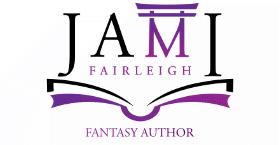
Book Review: Understanding Conflict by Janice Hardy

If you’ve ever received feedback that your story lacks conflict or tension, check out Understanding Conflict by Janice Hardy.
She’s an author of both fiction and nonfiction and you may remember her from a few weeks ago when I shared my favorite writing resources, among which was her amazing blog, Fiction University.
Understanding Conflict
 We all know conflict is an important component of storytelling because it helps drive the story forward.
We all know conflict is an important component of storytelling because it helps drive the story forward.
But what is conflict?
In Understanding Conflict, Hardy presents the clearest definition of conflict I’ve seen so far. She talks about common misconceptions and discusses why writers struggle with it.
While reading, I had several “ah ha!” moments as I learned why conflict is more than a confrontation, and how obstacles by themselves do not create conflict.
Here are a few of my biggest takeaways.
External vs Internal Conflict
Plot-based (external) conflicts are the challenges your characters must overcome to get what they want. Character-based (internal) conflicts are the emotions your characters struggle with while trying to decide what to do. But in either case, unless your character struggles with their choices, you’ve created obstacles, not conflict.
Conflict is not Tension
Did you know you can have conflict without tension, and tension without conflict?
Like a lot of writers, I assumed tension between characters was conflict. But if your character endures a tense situation, and it doesn’t force them to make a choice, change their plans, or refocus their motivation, it’s not meaningful conflict.
Meaningful conflict forces change.
According to Hardy, conflict is important because it drives a reader’s tension.

What I liked about the book
Hardy’s writing style is clear and concise, but not boring. Understanding Conflict kept my attention, and I read it straight through.
The argument Hardy presents in Understanding Conflict is well organized and informative. Not only does Hardy frame and define each concept, she’s very good at providing escalating examples for the major ideas she presents. I learn a lot when someone presents a flat, simple idea and then improves and heightens it.
Hardy uses several examples to illustrate her points. These examples include the films Mama, Burnt, and Sanctum and the television shows Scandal and Downton Abbey. She also talks about how the antagonist or antagonistic force provides opportunities for conflict.

Final Thoughts
Understanding Conflict is a useful and informative book. It helped me grasp the difference between tension and conflict. It also helped me understand how to raise stakes without jumping straight into a life-or-death situation.
Hardy did a great job organizing the book. It’s easy to read, and the examples are on point. She writes her books with the same style, voice, and clarity as her blog articles, so if they resonate with you, you’ll like her non-fiction books too.
Although I originally purchased Understanding Conflict as an ebook, I found it so useful that I’ve since purchased a paperback version to keep in my library.
What are your favorite resources for understanding conflict?
Header image by Mikołaj on Unsplash, manipulated by me. This article contains affiliate links. Thank you for your support!
